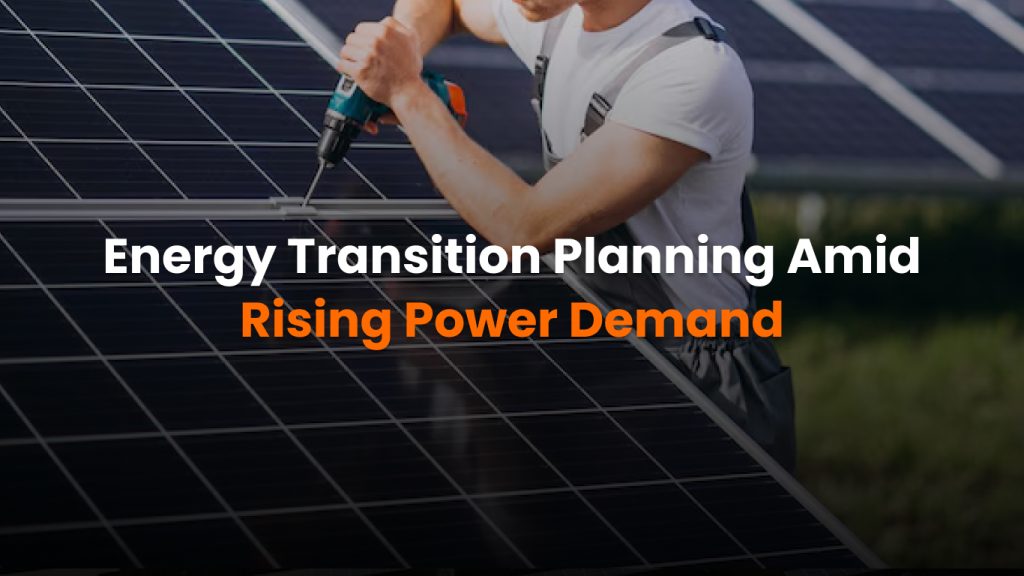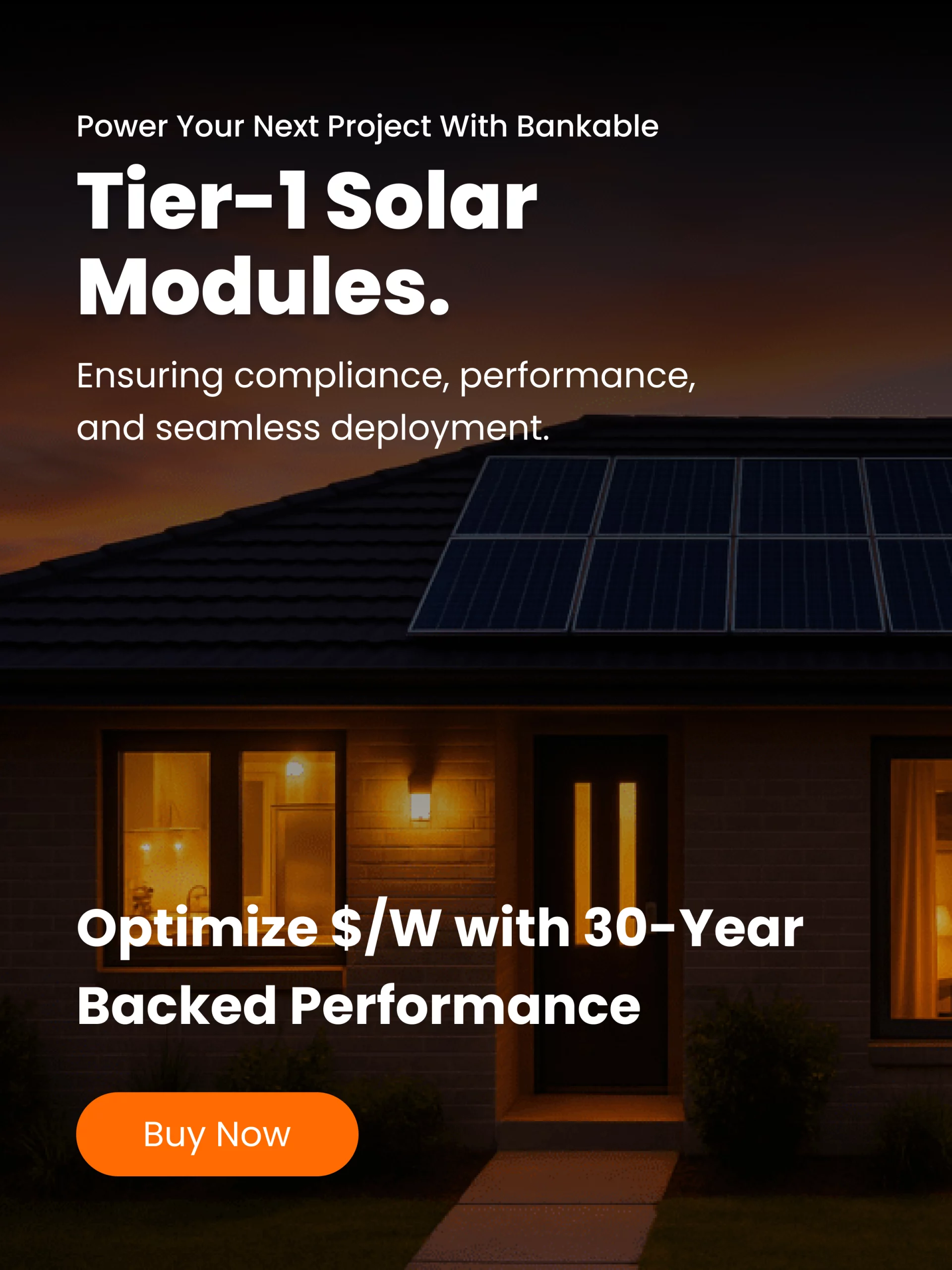Introduction:
Worldwide electricity consumption is climbing fast – in fact, global demand is expected to double by 2050, with businesses driving about 75% of that growth. Even in the near term, eight in ten companies anticipate their energy use will increase in the next three years. This surging power demand is straining grids and budgets, as 66% of organizations worry about securing reliable energy for growth and report that volatile costs are impacting profitability. The clear takeaway is that business leaders must plan now for a future of higher energy needs. Success amid rising demand will require taking a long-term strategic view – essentially, engaging in proactive energy transition planning. By crafting a plan to expand renewable energy, improve efficiency, and manage consumption, companies can meet growing power requirements sustainably and cost-effectively. Below, we examine why rising demand calls for strategic energy planning and outline key strategies to ensure your business can thrive in a high-demand future.
The Rising Power Demand Challenge
Several factors are fueling unprecedented growth in energy usage. Rapid digitalization is a major driver – for example, the spread of AI and data centers is causing electricity consumption to skyrocket (global data center power use is on track to more than double within 5 years). But AI isn’t the only culprit. An EY survey identified the addition of new equipment, the uptake of electric vehicles, the reshoring of manufacturing, and policy mandates as additional contributors to surging demand. In other words, businesses are electrifying operations and expanding in ways that require much more power. The risk is that if this demand is met by traditional fossil-fueled grids, companies could face reliability issues and higher carbon costs. Already, many regions experience grid constraints and price spikes during peak hours. Without action, rising demand could mean serious energy shortfalls or exorbitant costs in the years ahead. This is why planning for rising demand is so critical – it allows companies to get ahead of the curve by securing new energy resources and adopting measures to prevent demand from outpacing supply. Simply put, businesses that fail to plan may struggle with energy reliability and financial performance as power needs climb.
Planning a Sustainable Energy Transition
To address growing power requirements, companies should develop a comprehensive energy transition plan focused on reliability and sustainability. The goal is to increase energy supply (through clean generation and storage) while managing energy use (through efficiency and load control). Here are key strategies to include in your plan:
- Expand Renewable Energy Capacity: Increasing the use of renewable power is fundamental. This could mean installing on-site generation (like a rooftop solar array or wind turbines) or contracting for off-site renewable energy via PPAs. Renewables provide a scalable way to meet higher demand without corresponding emissions or fuel costs. Many businesses are actively pursuing this – 93% of executives in one study said they are considering on-site renewables investments as part of growth plans. By building your own clean energy capacity or partnering in utility-scale projects, you can ensure a steady supply to match rising needs. For example, large factories are now adding solar farms on their property; the generated power grows with their output. Pairing renewables with energy storage (batteries) further guarantees that even peak demand can be met reliably with clean power.
- Enhance Energy Efficiency and Load Management: On the demand side, aggressive efficiency measures can significantly curb how much your power use actually grows. Upgrading to high-efficiency machinery, optimizing processes, and adopting smart controls will reduce waste so that increased production doesn’t proportionally increase energy consumption. Many businesses find that investing in efficiency can offset a good portion of new demand. In parallel, load management strategies help flatten peak demand. For instance, demand response programs reward companies for shifting certain energy-intensive activities to off-peak times. There is growing interest in such programs – participation in demand response is expected to quadruple as companies look to reduce peak usage. By smoothing out spikes, you can operate within grid limits and avoid premium charges. The bottom line: it’s often cheaper and easier to save a kilowatt than to generate a new one, so efficiency and smart load control should be priority tools in your plan.
- Deploy Energy Storage and Backup Solutions: To ensure reliability as demand grows, integrating energy storage and backup generation is key. Battery storage systems allow you to store inexpensive or excess energy (say, from solar panels at midday) and release it when demand surges, thereby covering short-term peaks without drawing costly grid power. Storage essentially gives you a buffer that makes a high-demand facility run more smoothly and cheaply. Many companies have already added battery banks to their sites as a resiliency measure. Likewise, having backup generators (preferably fueled by biofuels or other cleaner fuels) can protect operations during grid outages that might become more frequent under heavy loads. The combination of renewables + batteries + smart generators can form a microgrid that keeps your facility self-sufficient during emergencies. As an example, around 20% of businesses have invested in on-site generation and storage already, and two-thirds plan to expand these efforts in the next few years. Building in these capabilities now is far better than scrambling after a blackout or grid failure hits.
- Consider Electrification of Processes and Fleets: Part of planning for rising demand is anticipating why your demand is rising. Many companies are electrifying fleets (trucks, forklifts, company cars) or switching industrial processes from fossil fuels to electric (for instance, using electric boilers or heaters). These shifts are great for sustainability but will increase facility power usage. It’s critical to incorporate these into your energy transition roadmap. If you know you’ll add 50 electric delivery trucks that need overnight charging, plan for the electrical infrastructure and extra power supply (ideally from onsite solar plus storage or a dedicated green tariff) to accommodate that. Similarly, if you aim to electrify a gas-fired process, maybe schedule its operation when other loads are low, or ensure a new renewable source comes online to support it. By coordinating electrification initiatives with your energy procurement and efficiency efforts, you prevent unpleasant surprises in the form of overloaded circuits or unplanned energy expenses. A well-thought-out plan aligns these timelines: as you electrify more, you also bring on more renewable generation or efficiency improvements to balance the load.
Staying Ahead of the Curve:
Energy transition planning amid rising demand isn’t just about avoiding problems – it can create competitive advantages. Businesses that secure reliable, clean energy early will enjoy greater energy security and stable costs, whereas late adopters might face energy shortages or punitive carbon expenses. There’s also a market dimension: more customers and partners now prefer companies powered by renewables, viewing it as a sign of forward-thinking and responsibility. Proactively investing in sustainable energy can enhance your brand and meet growing ESG expectations. Additionally, some firms may even monetize their transition efforts – for example, by selling excess solar power back to the grid (a move 41% of businesses plan to pursue)or by leveraging batteries in grid services markets. All told, having a robust plan to meet rising demand with sustainable solutions will position your company as an energy leader. You’ll be proof that economic growth and environmental stewardship can go hand-in-hand. On the flip side, failing to plan could force draconian measures later (like production curtailments during power shortages or paying extreme prices for peak electricity). The message from experts is clear: take control of your energy future now. As one energy industry leader put it, “Successfully navigating accelerating business energy growth will drive energy prosperity and fuel the intelligent economies of the future”. In practical terms, that means planning ahead to ensure every additional kilowatt-hour your business needs is efficiently used and sustainably sourced.
Conclusion:
Power demand is rising rapidly, but businesses are not helpless in the face of this trend. Through careful energy transition planning, you can expand your energy supply in a green way and rein in consumption to mitigate the strain. A combination of renewables expansion, efficiency upgrades, load management, and storage deployment will allow your organization to meet growing power needs without sacrificing reliability or profitability. Moreover, this strategic approach positions you to capitalize on the energy transition – achieving climate targets, impressing stakeholders, and possibly even gaining new revenue streams – instead of being victim to it. Planning today for tomorrow’s energy demands is not just prudent; it’s becoming a hallmark of the most resilient and successful companies. By treating energy as a strategic priority, your business can flourish even as the world’s appetite for electricity continues to climb.




